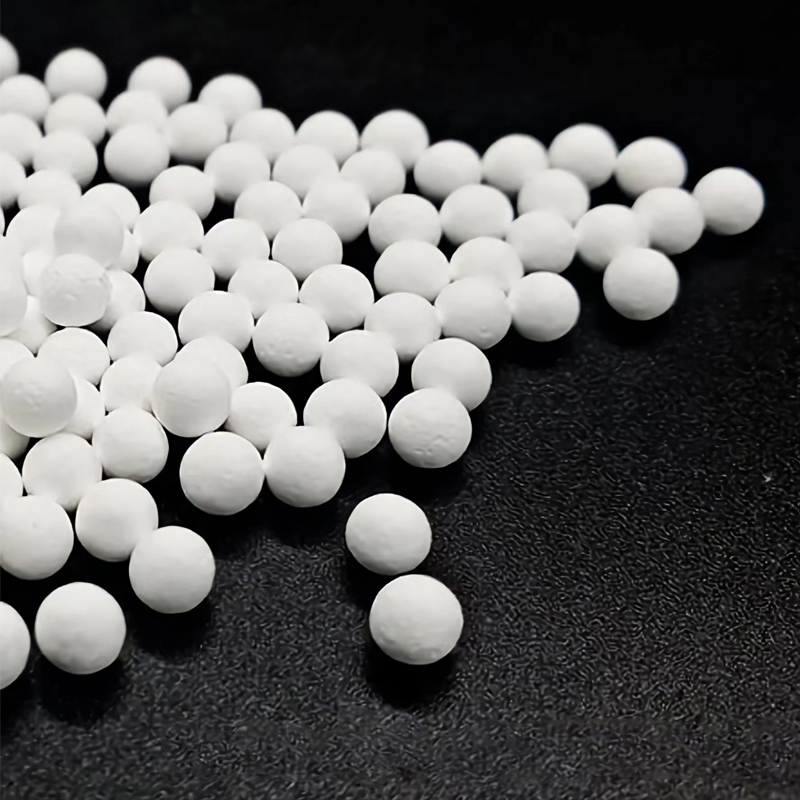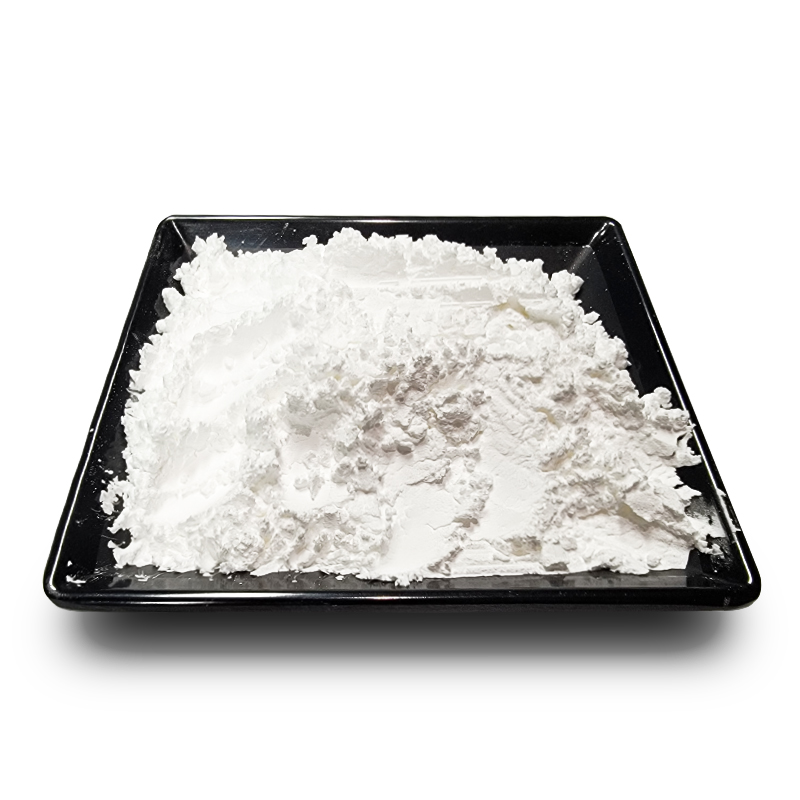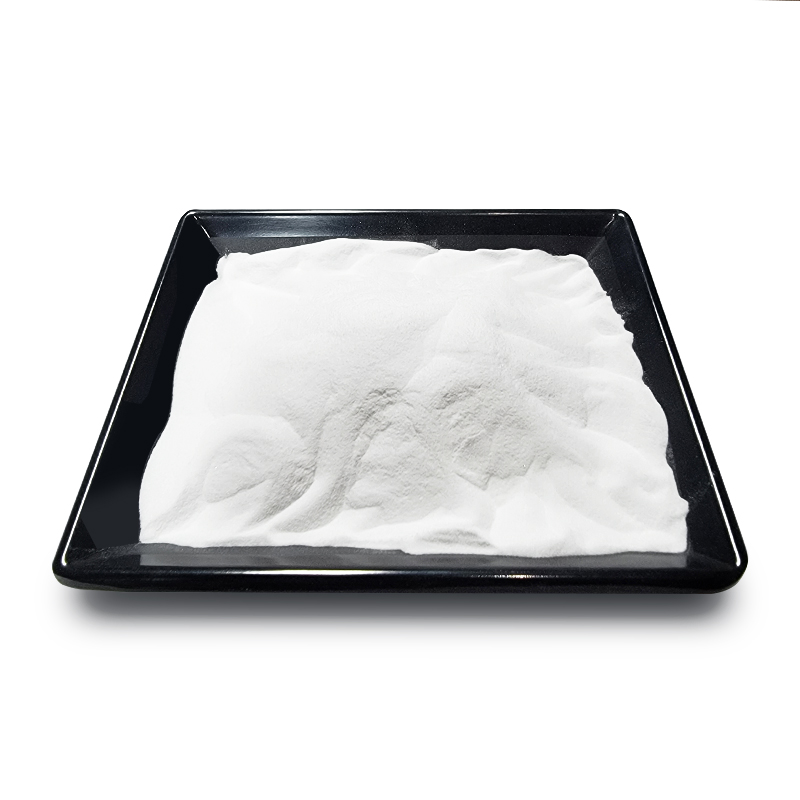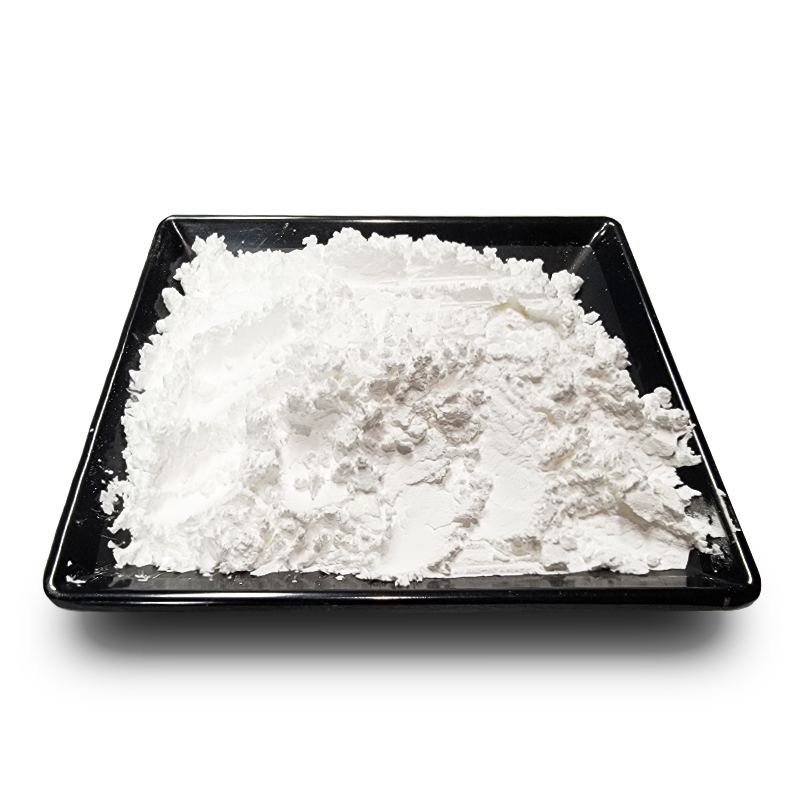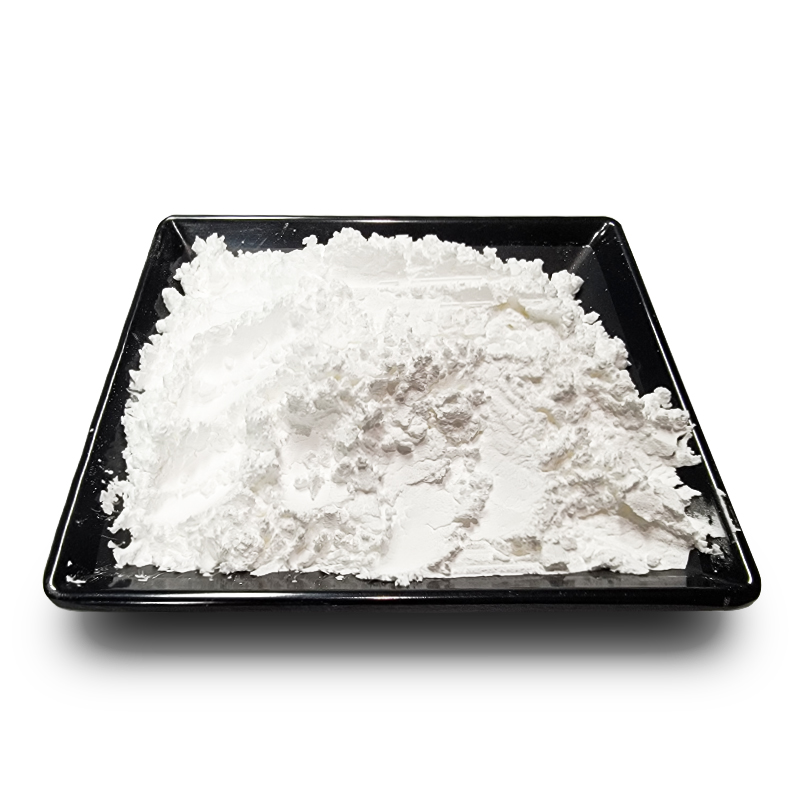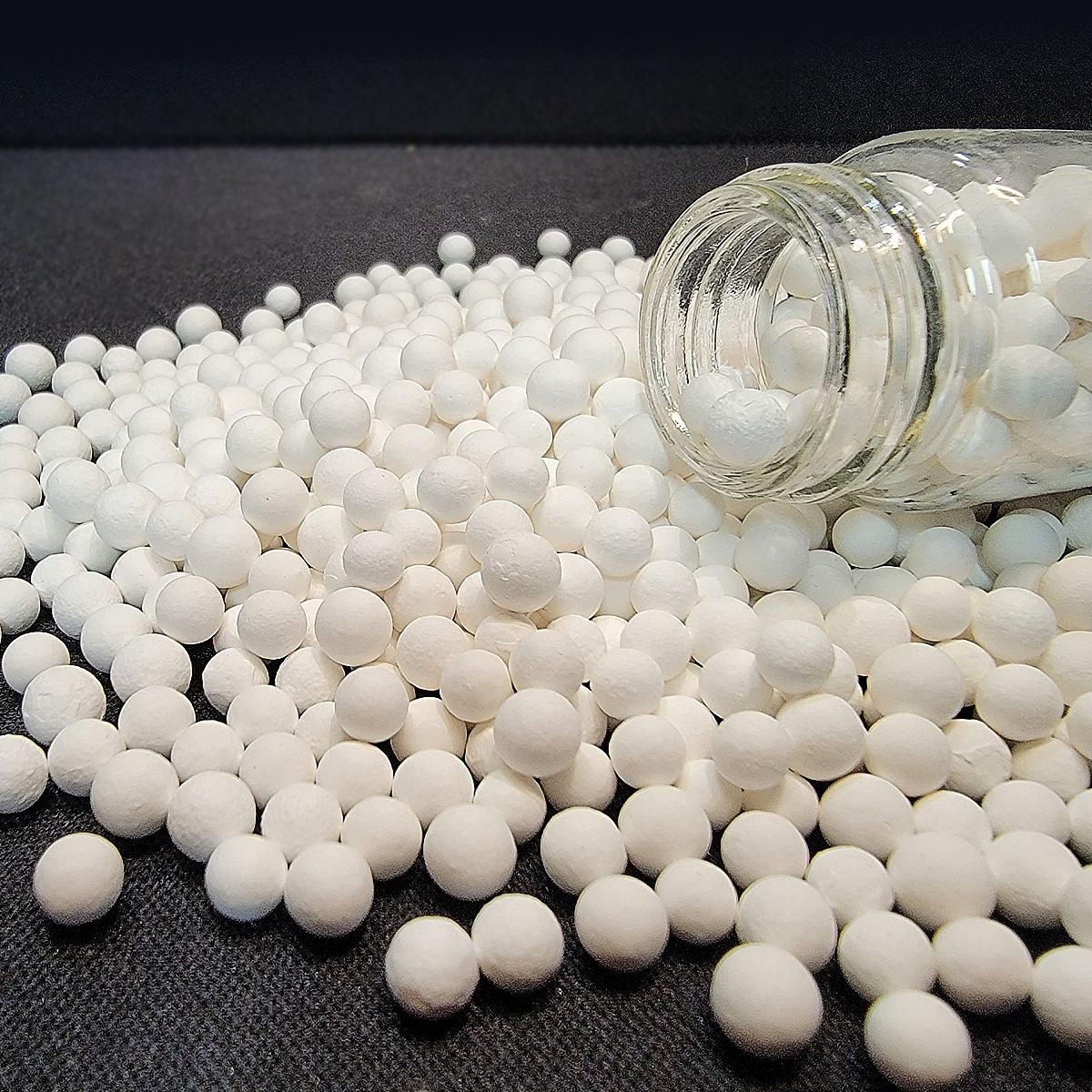Innovative catalyst technology for sustainable industrial processes
Clariant Catalyst, a leading global company in the field of catalysts and specialty chemicals, has recently made significant advancements in the development of innovative catalytic solutions for a wide range of industrial processes. With a focus on sustainability and efficiency, the company is dedicated to providing high-quality catalysts that enable its customers to achieve their production goals while reducing environmental impact.Founded in [year], Clariant Catalyst has built a strong reputation for delivering cutting-edge solutions that address the evolving needs of various industries, including petrochemicals, refining, and chemical manufacturing. The company's extensive portfolio of catalysts encompasses a diverse array of applications, from hydroprocessing and emissions control to renewable fuel production and polymerization.In recent years, Clariant Catalyst has made substantial investments in research and development to expand its product offerings and enhance the performance of its existing catalysts. Leveraging its state-of-the-art laboratories and technical expertise, the company has continuously pushed the boundaries of innovation, resulting in the introduction of several breakthrough catalyst technologies that deliver superior efficiency and cost-effectiveness.One of Clariant Catalyst's notable achievements is the successful development of a novel catalyst designed to improve the production of renewable fuels from biomass and waste materials. This advancement is aligned with the company's commitment to sustainable solutions, as it enables the conversion of non-traditional feedstocks into high-quality biofuels that can reduce greenhouse gas emissions and contribute to the transition to a low-carbon economy.Additionally, Clariant Catalyst has made significant progress in the optimization of catalysts for emissions control, particularly in the reduction of harmful pollutants from industrial processes and vehicle exhaust systems. By utilizing advanced chemical formulations and engineering techniques, the company has been able to achieve remarkable results in minimizing the environmental impact of various combustion processes, thus supporting global efforts to improve air quality and public health.Furthermore, Clariant Catalyst has expanded its expertise in the area of catalytic technologies for sustainable chemical manufacturing, with a focus on enabling the production of key building blocks for the synthesis of specialty chemicals and polymers. Through the development of highly selective and durable catalysts, the company has empowered its customers to streamline their production processes and enhance the overall efficiency of their operations.In line with its dedication to sustainability, Clariant Catalyst has also been proactive in addressing the challenges associated with the circular economy, offering catalyst solutions that facilitate the recycling and upcycling of plastics and other materials. By enabling the conversion of waste streams into valuable chemical intermediates, the company is actively contributing to the reduction of waste and the promotion of a more circular and sustainable approach to resource utilization.With a global presence and a strong commitment to customer partnerships, Clariant Catalyst has established itself as a trusted and reliable provider of catalyst solutions, serving a diverse customer base that spans across the Americas, Europe, and Asia. The company's collaborative approach and customized technical support have positioned it as a preferred collaborator for businesses seeking to enhance the performance and sustainability of their operations.Looking ahead, Clariant Catalyst remains dedicated to driving innovation and advancing the frontiers of catalytic technology, with a continued focus on delivering value-added solutions that enable its customers to achieve their strategic objectives while minimizing their environmental footprint. By blending its technical expertise with a forward-thinking mindset, the company is poised to play a pivotal role in shaping the future of sustainable catalysis and chemical processing.In conclusion, Clariant Catalyst's relentless pursuit of excellence and sustainability in catalytic solutions has positioned it as a leading force in the industry, driving positive change and value creation for its customers and society as a whole. As the company continues to push the boundaries of innovation and expand its global footprint, it remains committed to making a lasting impact through its cutting-edge catalyst offerings.
Read More
Unveiling the Latest Breakthrough in Methanol Synthesis Catalysts
Decades of technological advancements and innovation have propelled the world towards a future fueled by sustainable energy sources. One such source that has gained significant attention is methanol, an alternative fuel with vast potential to revolutionize various industries. At the forefront of this transformative movement is the Methanol Synthesis Catalyst.As the demand for cleaner energy continues to rise, the Methanol Synthesis Catalyst, developed by a pioneering company (must omit the brand name), has emerged as a game-changer in this domain. This catalyst drives the chemical reaction whereby hydrogen and carbon dioxide are converted into methanol, a versatile fuel that can be used in a multitude of applications.Nowadays, most methanol is produced from natural gas or coal, emitting substantial amounts of greenhouse gases in the process. However, the Methanol Synthesis Catalyst offers an innovative and sustainable alternative, utilizing carbon dioxide captured from various sources such as industrial flue gases or even directly from the atmosphere. By efficiently converting this carbon dioxide into methanol, this catalyst effectively reduces overall emissions, making it a vital tool in the fight against climate change.The secret behind the exceptional performance of this catalyst lies in its unique composition and structural design. The company behind its creation has invested extensive research and development efforts to refine its formulation, resulting in a catalyst with enhanced activity and stability. These key attributes allow it to maintain its effectiveness over prolonged periods, ensuring optimal methanol production with minimal downtime.Moreover, the Methanol Synthesis Catalyst exhibits remarkable selectivity, meaning it primarily promotes the desired reaction – the conversion of hydrogen and carbon dioxide into methanol – while minimizing the formation of unwanted byproducts. This selectivity not only optimizes methanol yield but also reduces the need for additional purification steps, streamlining the production process and enhancing its economic viability.Furthermore, the company's commitment to sustainability extends beyond the catalyst's functionality. They have implemented stringent quality control measures to ensure that the catalyst's production conforms to strict environmental standards. By employing responsible manufacturing practices and utilizing renewable energy sources, this company underscores its dedication to creating a greener future, from concept to realization.The versatile nature of methanol makes it a valuable resource across a range of industries. From transportation fuels and power generation to the production of synthetic materials, methanol offers a clean and efficient alternative to conventional fossil fuel-based products. Recognizing this immense potential, the Methanol Synthesis Catalyst has been engineered to deliver exceptional performance in these applications, expanding the horizons of sustainable technology.Moreover, this catalyst's versatility extends to its adaptability across various scales of production. Whether employed in large-scale industrial facilities or smaller decentralized units, the catalyst consistently delivers high methanol yields, ensuring optimized production efficiency across the board.The undeniable benefits of the Methanol Synthesis Catalyst have gained significant recognition within the industry. Its successful deployment in numerous projects worldwide has not only demonstrated its viability but also showcased its positive impact on reducing greenhouse gas emissions. Governments, environmental organizations, and forward-thinking companies are increasingly turning to this catalyst to accelerate the transition towards a more sustainable and cleaner energy future.In conclusion, the Methanol Synthesis Catalyst represents a major milestone in the quest for sustainable and cleaner energy solutions. By capitalizing on its unique structural design and selectivity, this catalyst efficiently converts carbon dioxide into methanol, significantly reducing greenhouse gas emissions. Furthermore, its versatility and adaptability make it an invaluable tool across various industries, driving innovation and progress towards a greener future. With its exceptional performance and proven track record, the Methanol Synthesis Catalyst is poised to revolutionize the energy landscape and contribute to a more sustainable and prosperous world for generations to come.
Read More
New Arsenic Removal Agent Shows Promising Results for Clean Drinking Water
Arsenic Removal Agent Proving to be Revolutionary in Water Treatment In today's society, access to clean and safe drinking water is essential for the health and well-being of people all over the world. Unfortunately, many communities are facing the challenge of dealing with high levels of arsenic in their water sources, posing significant health risks to the population. However, a revolutionary solution has emerged in the form of a groundbreaking Arsenic Removal Agent, developed by a leading environmental technology company, {company name}.{Company name} has been at the forefront of developing innovative solutions for water treatment and environmental remediation for over a decade. Their team of researchers and scientists have dedicated themselves to creating effective and sustainable solutions to address the pressing environmental challenges facing our world today. Their latest breakthrough in the form of the Arsenic Removal Agent has already shown great promise in effectively removing arsenic from water sources, making it safe for consumption and use in various applications.The Arsenic Removal Agent developed by {company name} is a proprietary blend of advanced materials and technologies that have been specifically engineered to target and remove arsenic from water. The agent works by effectively binding to arsenic molecules and removing them from the water, resulting in a significant reduction in arsenic levels that surpasses current industry standards. This innovative approach has the potential to transform the way communities and industries tackle the issue of arsenic contamination in their water sources.One of the key advantages of the Arsenic Removal Agent is its versatility and scalability. It can be easily integrated into existing water treatment systems, making it a practical and cost-effective solution for communities and industrial facilities dealing with arsenic contamination. The agent is also capable of handling high volumes of water, making it suitable for large-scale applications such as municipal water treatment plants and industrial facilities.Furthermore, {company name} has placed a strong emphasis on ensuring that their Arsenic Removal Agent is environmentally friendly and sustainable. The materials used in the agent are non-toxic and biodegradable, minimizing any potential impact on the environment. This commitment to environmental responsibility aligns with {company name}'s broader mission of developing solutions that not only address pressing environmental challenges but also do so in a way that is responsible and sustainable.The impact of the Arsenic Removal Agent developed by {company name} is already being felt in communities and industries grappling with arsenic contamination. In a recent pilot program conducted in a rural community affected by high levels of arsenic in their drinking water, the use of the agent resulted in a dramatic reduction in arsenic levels, providing the residents with access to safe and clean drinking water for the first time in years. The success of this pilot program has garnered attention from government agencies and non-profit organizations, positioning the Arsenic Removal Agent as a viable solution for addressing arsenic contamination in water sources.As {company name} continues to advance their efforts in promoting the Arsenic Removal Agent, they are actively collaborating with various stakeholders, including government agencies, non-profit organizations, and industry partners. These partnerships are essential in furthering the adoption and implementation of the agent in communities and industries affected by arsenic contamination, ultimately leading to a positive impact on public health and environmental sustainability.Looking ahead, {company name} is committed to furthering the development of their Arsenic Removal Agent and expanding its use to address arsenic contamination on a global scale. With a strong track record of delivering innovative environmental solutions, {company name} is well-positioned to play a pivotal role in addressing the pressing issue of arsenic contamination in water sources, offering hope and relief to communities and industries affected by this widespread problem.
Read More
New ZSM-23 technology revolutionizes the industry: A game changer in the world of technology
Zsm-23 is a revolutionary product that has been making waves in the market recently. This product is a result of extensive research and development by a team of experts at a prominent company. With its unique features and innovative design, Zsm-23 is changing the game in the industry and setting new standards for performance and reliability.The team behind Zsm-23 is dedicated to creating products that surpass the expectations of their customers, and Zsm-23 is a perfect example of their commitment to excellence. This innovative product is designed to meet the needs of a wide range of industries, from automotive to aerospace, and has already received glowing reviews from professionals and experts in the field.Zsm-23 is a versatile product that offers a wide range of benefits. Its robust construction and durable materials make it suitable for even the most demanding applications, while its advanced features and cutting-edge technology ensure optimal performance and efficiency. Whether it is used for precision machining or heavy-duty operations, Zsm-23 delivers consistent results and outperforms its competitors.The company behind Zsm-23 has a long-standing reputation for delivering high-quality products that meet the needs of their customers. With a focus on innovation and continuous improvement, the company has earned the trust and loyalty of clients around the world. Their commitment to excellence is evident in every aspect of their business, from product development to customer service, and Zsm-23 is a testament to their dedication to delivering superior solutions.In addition to its superior performance, Zsm-23 is also designed with user-friendliness in mind. Its intuitive interface and easy-to-use controls make it accessible to operators of all skill levels, while its ergonomic design and compact size make it convenient to use in any workspace. This product is not only a powerful tool for professionals but also a practical solution for businesses looking to streamline their operations and improve their productivity.Zsm-23 is also backed by comprehensive support from the company, including training programs, technical assistance, and a dedicated customer service team. This ensures that customers can make the most of their investment in Zsm-23 and achieve the best possible results. With the company's expertise and resources, customers can have confidence in the quality and reliability of Zsm-23, knowing that they are backed by a team of professionals who are committed to their success.In conclusion, Zsm-23 is a game-changer in the industry, and the company behind it is dedicated to providing their customers with the best solutions possible. With its innovative design, advanced features, and superior performance, Zsm-23 sets a new standard for excellence, and its impact is already being felt across various industries. As the demand for reliable and efficient solutions continues to grow, Zsm-23 and the company behind it are well-positioned to lead the way and continue to deliver exceptional products and services to their customers.
Read More
Study Shows ZSM-5 Zeolite's Potential Benefits
Introducing a Breakthrough in Catalyst Technology: ZSM-5Catalysts play a critical role in a wide range of chemical processes, including the production of fuels, chemicals, and environmental cleanup. These materials help to speed up the rate of chemical reactions and improve the efficiency of these processes. With the importance of catalysts in mind, [Company Name] has been dedicated to the research and development of innovative catalyst technologies for over a decade. The latest breakthrough from [Company Name] comes in the form of a new generation of catalysts based on the zeolite ZSM-5.ZSM-5 is a type of zeolite, a crystalline material with a unique porous structure that makes it an ideal candidate for catalytic applications. The use of ZSM-5 as a catalyst has long been recognized for its potential to improve the selectivity and activity of various chemical reactions. However, [Company Name] has taken this a step further by developing a proprietary method for synthesizing ZSM-5 with enhanced properties, making it an even more effective catalyst for a range of industrial processes.The unique properties of the new ZSM-5 catalyst developed by [Company Name] have been demonstrated in several key applications. For example, in the field of petroleum refining, the new catalyst has shown exceptional performance in converting bulky hydrocarbons into more valuable products such as gasoline and diesel fuel. This has the potential to significantly improve the efficiency and economics of refinery operations, providing a competitive advantage for companies in the petroleum industry.In addition to petroleum refining, the new ZSM-5 catalyst has also shown promise in the production of chemicals and petrochemicals. For example, it has demonstrated high activity and selectivity in the conversion of methanol to olefins, a key reaction for the production of plastics and other materials. By improving the efficiency of this process, the new catalyst has the potential to reduce production costs and increase the sustainability of chemical manufacturing.Furthermore, the unique structure of the new ZSM-5 catalyst has also shown potential in environmental applications. For example, it has been demonstrated to be highly effective in the catalytic conversion of harmful pollutants such as nitrogen oxides and volatile organic compounds into more benign substances. This makes it a promising candidate for use in exhaust treatment systems for vehicles and industrial facilities, helping to reduce air pollution and improve air quality.In summary, the new generation of ZSM-5 catalyst developed by [Company Name] represents a significant advancement in catalyst technology. Its improved performance and versatility make it a valuable tool for a wide range of industrial processes, from petroleum refining to chemical production and environmental remediation. With this breakthrough, [Company Name] is poised to make a meaningful impact on the global chemical industry and contribute to a more sustainable and efficient future.For more information about [Company Name] and its innovative catalyst technologies, please visit www.companywebsite.com.Contact:[Company Name]Phone: XXX-XXX-XXXXEmail: [email protected]
Read More
New Microsphere Material: A Breakthrough in Alumina Technology
Alumina Microsphere, a leading company in the field of advanced materials and specialty chemicals, has recently introduced a groundbreaking new product that is set to revolutionize the industry. The company, known for its innovative research and development efforts, has created an alumina microsphere that offers unparalleled strength, durability, and versatility. This new product is a game-changer in the world of materials science, and is expected to have a significant impact on a wide range of industries, from manufacturing to healthcare.Alumina Microsphere has long been recognized for its expertise in developing high-performance materials that are used in a variety of applications. The company is committed to pushing the boundaries of what is possible in the field of materials science, and its new alumina microsphere is a testament to that commitment. This product is the result of years of research and development, and represents a major breakthrough in the industry.The alumina microsphere is a unique material that offers a number of advantages over traditional materials. It is incredibly strong and durable, making it suitable for use in a wide range of applications where strength and resilience are paramount. Additionally, the microsphere is highly versatile, and can be tailored to meet the specific needs of different industries. This means that it has the potential to be used in a variety of different products, further expanding its impact.One of the most impressive features of the alumina microsphere is its lightweight nature. Despite its exceptional strength and durability, the microsphere is remarkably lightweight, making it an ideal choice for applications where weight is a concern. This makes it an attractive option for industries such as aerospace and automotive, where reducing weight can have a significant impact on performance and efficiency.In addition to its physical properties, the alumina microsphere also offers impressive thermal and chemical stability. This makes it suitable for use in high-temperature and corrosive environments, further expanding its potential applications. The microsphere is also resistant to abrasion and wear, making it a durable choice for applications that involve frequent contact with other materials.The alumina microsphere has the potential to have a significant impact on a wide range of industries. In the manufacturing sector, it could be used to create stronger, lighter, and more durable products. In the healthcare industry, it could be used to develop more effective medical devices and implants. In the aerospace and automotive industries, it could be used to create more fuel-efficient and high-performance vehicles. The possibilities are virtually endless, and the alumina microsphere is poised to change the way that a wide range of products are made and used.Alumina Microsphere is excited to introduce this groundbreaking new product to the market, and is confident that it will be well-received by industries around the world. The company is committed to supporting its customers in finding innovative ways to incorporate the microsphere into their products, and is already working with a number of industry leaders to explore potential applications.In conclusion, the alumina microsphere represents a major step forward in the field of advanced materials and specialty chemicals. Its unique combination of strength, durability, versatility, and lightweight nature make it an ideal choice for a wide range of industries. Alumina Microsphere is proud to have developed such an innovative product, and is excited to see the impact that it will have on the market. With its commitment to pushing the boundaries of what is possible in materials science, the company is poised to continue leading the way in the development of advanced materials for years to come.
Read More
Sulfur Recovery Catalyst: New Innovations in Sulfur Processing
Read More
Catalysts in Hydrofining Offer Better Fuel Quality and Efficiency
Title: Revolutionary Hydrofining Catalyst Promises Enhanced Performance and Sustainability in Oil Refining ProcessIntroduction:In a bid to further revolutionize the oil refining industry, a leading chemical manufacturing company has developed an innovative Hydrofining Catalyst. Designed to enhance the performance, efficiency, and sustainability of oil refining processes, this cutting-edge catalyst is poised to redefine the global energy landscape.Company Background:Founded in [Company Founding Year], [Company Name] is a renowned chemical manufacturing company at the forefront of developing revolutionary catalyst technologies. With a strong commitment to sustainable solutions, the company has consistently pushed the boundaries of innovation in order to meet the evolving demands of various industries worldwide. Combining state-of-the-art research facilities with a team of expert chemists and engineers, [Company Name] has successfully developed numerous catalysts that have redefined industry standards.Hydrofining Catalyst: Redefining Oil Refining ProcessesThe newly developed Hydrofining Catalyst is poised to transform the oil refining landscape by offering unparalleled performance and sustainability advantages. Its unique formulation and structure enable it to effectively remove impurities, such as sulfur, nitrogen, and aromatic components, from crude oil. This results in higher quality end-products, lower emission levels, and improved energy efficiency, all while meeting increasingly stringent environmental regulations.Enhanced Performance and Efficiency:The Hydrofining Catalyst brings a host of benefits to oil refineries, including optimized performance and greater operational efficiency. By selectively targeting harmful contaminants, it ensures cleaner and purer refining processes, leading to higher yields of valuable products, such as gasoline, diesel, and jet fuel. This translates into increased profitability for refineries, as well as a reduced environmental impact.Furthermore, the Hydrofining Catalyst's innovative design offers exceptional stability and longevity, minimizing catalyst deactivation and extending the catalyst's lifespan. By reducing the frequency of catalyst replacement, refineries can significantly reduce downtime and maintenance costs, enhancing overall productivity and profitability.Sustainability Advantages:In an era of increased environmental consciousness, the Hydrofining Catalyst takes center stage by promoting sustainable practices within the oil refining industry. By substantially lowering the sulfur content in refined products, it aids in the reduction of harmful emissions, including sulfur dioxide and nitrogen oxides, which contribute to air pollution and acid rain.Furthermore, the Hydrofining Catalyst's selective removal of aromatic compounds results in cleaner and less toxic end-products. This not only benefits the environment but also improves the overall quality and safety of refined fuels.Market Impact and Future Outlook:The introduction of the Hydrofining Catalyst marks a significant milestone in the oil refining industry, offering a more sustainable and efficient oil refining process. As the global demand for cleaner fuels continues to rise, this catalyst provides refineries with a competitive edge, allowing them to meet stringent emission standards while maximizing their operational profitability.With the increasing pressure from regulatory bodies and consumers to reduce environmental impact, the Hydrofining Catalyst is set to become a catalyst of change within the industry. Its widespread adoption has the potential to transform the landscape of oil refining, prioritizing sustainability without compromising operational efficiency.In conclusion, the Hydrofining Catalyst, developed by [Company Name], is a game-changer for the oil refining industry. With its ability to enhance performance, efficiency, and sustainability, this innovative catalyst promises to redefine the standards for oil refining processes worldwide. As we move towards a more sustainable future, this breakthrough technology sets a new benchmark for the industry while empowering refineries to meet the demands of a rapidly evolving energy landscape.
Read More
Methanation Catalyst: An Essential Component for Efficient Conversion Processes
Methanation Catalyst: A Game Changer in Renewable Energy ProductionIn our ever-evolving world, the search for sustainable and renewable energy sources has become a top priority. The need to reduce carbon emissions and mitigate the effects of climate change has prompted companies to invest in innovative technologies. One such groundbreaking solution is the Methanation Catalyst, a product that holds promising potential for revolutionizing the production of renewable energy.The Methanation Catalyst, developed by an industry leader in chemical innovation, is a key player in the transformation of renewable energy generation. This cutting-edge catalyst has the power to convert carbon dioxide (CO2) into methane (CH4), a clean and versatile alternative to fossil fuels.As the world shifts towards renewable energy sources, the Methanation Catalyst comes as a vital tool in addressing the intermittent nature of renewable energy generation. Despite their numerous benefits, sources like solar and wind energy often face limitations in terms of reliability and consistency. However, the Methanation Catalyst can bridge this gap by converting excess renewable energy into methane, which can be easily stored, transported, and used when needed.By harnessing the power of renewable energy, such as solar and wind, the Methanation Catalyst can produce high-quality methane fuel. This renewable methane has the potential to replace traditional natural gas, which is predominantly derived from fossil fuels. The production of renewable methane not only significantly reduces greenhouse gas emissions but also offers a path towards a carbon-neutral future.The effectiveness of the Methanation Catalyst lies in its unique composition and advanced technology. It utilizes a specific combination of catalyst materials that enhance the efficiency of the methanation process. Through a series of chemical reactions, the catalyst enables the conversion of CO2 into methane at relatively low temperatures and pressures. This impressive conversion efficiency ensures that the production of renewable methane is both economically viable and environmentally friendly.The Methanation Catalyst has already garnered attention and accolades in the industry. It has successfully undergone rigorous testing and certification processes, ensuring its reliability and adherence to international standards. Moreover, the catalyst has been endorsed by various environmental organizations for its potential in reducing greenhouse gas emissions and promoting sustainable energy practices.The company behind the Methanation Catalyst has a rich history of developing innovative solutions. With a strong focus on sustainability and environmental stewardship, the company has established itself as a leader in the field of renewable energy. Their commitment to research and development has paved the way for groundbreaking technologies that address pressing global challenges.In addition to its impressive environmental contributions, the Methanation Catalyst also presents significant economic opportunities. The production and utilization of renewable methane can stimulate job growth in the renewable energy sector. As governments and industries worldwide embrace clean energy transitions, the demand for renewable methane is expected to soar, providing lucrative prospects for companies engaged in its production and distribution.Furthermore, the Methanation Catalyst opens up possibilities for collaboration and partnerships. The company aims to work closely with governments and stakeholders to foster an ecosystem that supports the widespread adoption of renewable methane production. By creating a network of renewable energy producers, distributors, and end-users, the Methanation Catalyst can contribute to the establishment of a sustainable and resilient energy landscape.In conclusion, the Methanation Catalyst stands as a game-changer in the renewable energy sector. With its ability to convert CO2 into renewable methane, it addresses the intermittent nature of renewable energy sources, reduces greenhouse gas emissions, and paves the way for a carbon-neutral future. Supported by a reputable company driven by innovation and sustainability, the Methanation Catalyst promises to revolutionize the way we generate and utilize renewable energy. As the world seeks to confront the challenges of climate change, this groundbreaking catalyst offers a beacon of hope and a path towards a greener and more sustainable world.
Read More
Exploring the Benefits and Applications of Alumina Microspheres
Alumina Microspheres Revolutionizing Multiple IndustriesThe use of advanced materials has always been instrumental in pushing the boundaries of technological advancements. Alumina microspheres, a versatile and high-performance material, are creating waves across various industries such as automotive, aerospace, electronics, and biomedicine. With their exceptional physical and chemical properties, these microspheres are revolutionizing manufacturing processes and product development.Recognizing the immense potential of alumina microspheres, {company name} has emerged as a leading player in the production and supply of this groundbreaking material. Specializing in the manufacturing of alumina microspheres, {company name} has established itself as a trusted provider for industries worldwide.Alumina microspheres are spherical particles composed primarily of aluminum oxide (alumina), a highly stable and heat-resistant material. The size of these microspheres can range from a few micrometers to several millimeters, allowing for customized applications across various industries.One of the primary uses of alumina microspheres lies in the automotive industry. These microspheres are incorporated into automotive paints and coatings, offering enhanced durability and resistance to wear and tear. Additionally, the unique spherical shape of these particles helps to reduce friction and improve the overall efficiency of automotive engines. By minimizing engine wear, alumina microspheres contribute to increased fuel efficiency and reduced emissions.In the aerospace industry, alumina microspheres are being utilized in the development of lightweight and robust materials for aircraft components. The high strength-to-weight ratio of these microspheres enhances the structural integrity of aerospace parts and reduces the overall weight of aircraft. Consequently, this translates to increased fuel savings and improved flight performance.The electronics industry is also benefitting greatly from the exceptional properties of alumina microspheres. These microspheres find applications in ceramic capacitors, electronic substrates, and insulating materials. The insulating properties of alumina microspheres contribute to the efficient dissipation of heat, thus improving the performance and reliability of electronic devices. Moreover, their excellent dielectric properties make them ideal for use in high-frequency electronic components.In the field of biomedicine, alumina microspheres are being utilized in drug delivery systems and tissue engineering. The biocompatible nature of alumina makes it an ideal material for encapsulating drugs and delivering them to targeted sites within the body. Additionally, its ability to mimic the structure of natural bone tissue makes it a suitable candidate for regenerative medicine applications.{Company name} has positioned itself as a leader in the production of alumina microspheres by leveraging state-of-the-art manufacturing techniques and stringent quality control measures. The company offers a wide range of customizable options, including varying particle sizes, surface treatments, and levels of purity, catering to the unique requirements of different industries. With a commitment to sustainability, {company name} ensures that their production processes align with environmental standards and minimize waste generation.Furthermore, {company name} possesses a dedicated research and development team that constantly explores innovative applications of alumina microspheres. This enables the company to stay ahead of the curve and provide cutting-edge solutions to its customers.As the demand for advanced materials continues to rise, the significance of alumina microspheres cannot be understated. Their exceptional properties and versatility make them an invaluable component across multiple industries. With {company name} paving the way in their production and supply, we can expect to witness further advancements and breakthroughs in various technological fields.
Read More









